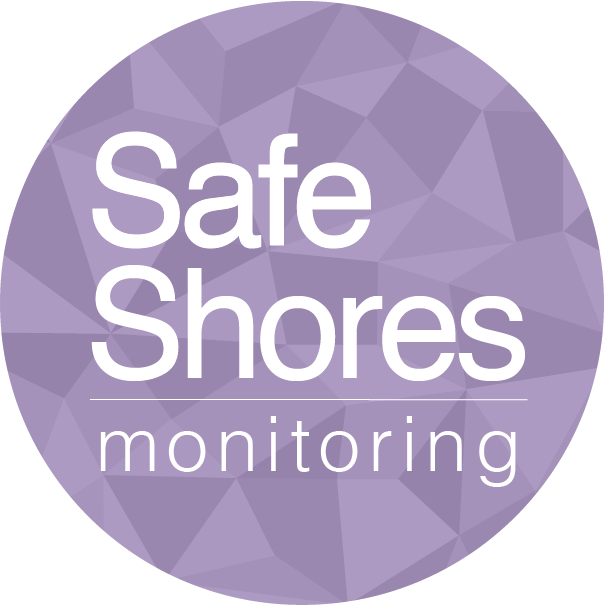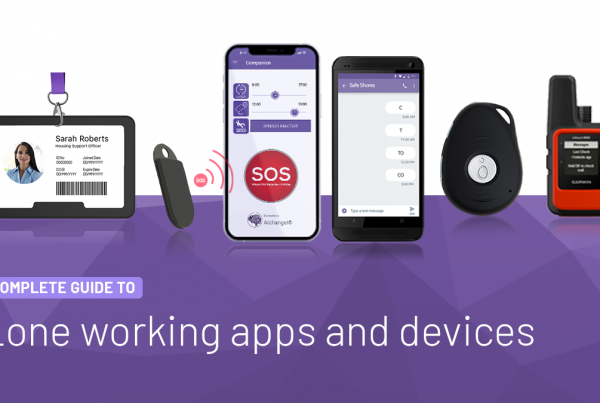Severe weather conditions can have a serious impact on your health and safety whilst working. Cold weather, hot weather, high winds, snow, heavy rain and storms – all kinds of weather conditions can turn severe and put you at risk across all industry sectors and job roles.
What are the risks of working in different severe weather conditions, and what steps can you take to protect yourself and other employees?
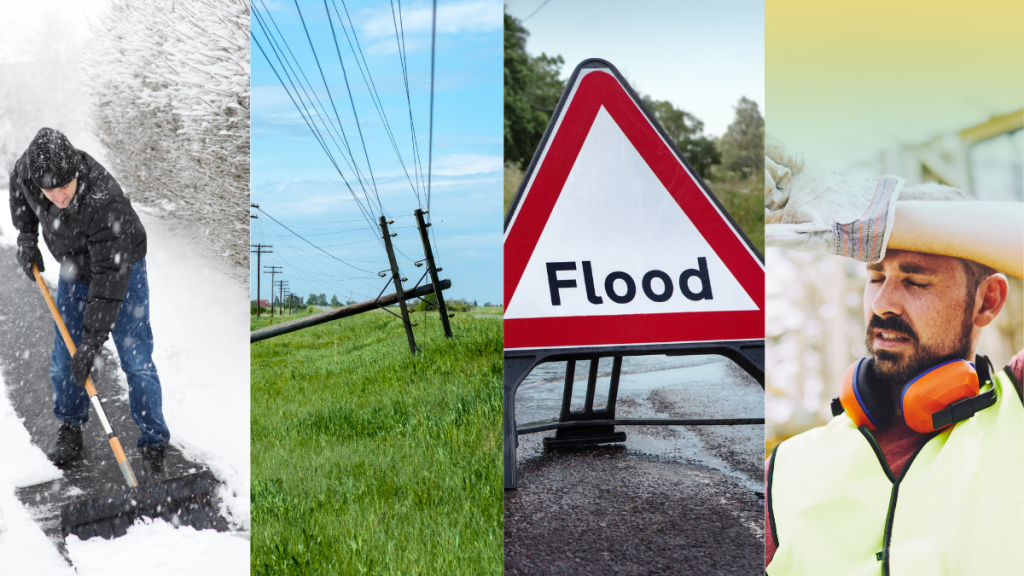
Severe weather: what are the risks?
Working in cold conditions
Cold weather conditions present a range of risks for employees who work both indoors and outdoors. With rapid drops in temperatures, cold winds, damp, wet and slippery conditions, employees must be made aware of how to responsibly work in cold conditions and steps they can take to mitigate any risks.
 Who is at risk when working in cold conditions?
Who is at risk when working in cold conditions?
Cold temperatures can impact a range of workers performing different activities. The risks of cold conditions must be considered for employees who regularly work or travel outdoors, and those who work in cold indoor conditions. This could include:
- Agricultural, fishing and forestry workers
- Construction workers
- Marina workers
- Postal workers
- Transport and logistics workers
- Gig economy workers – e.g. delivery services and food services
- Warehouse workers
- Retail environments – e.g. cold store environments, working around chilled and frozen products
- Care workers
- Any worker who is exposed to cold conditions
What are the risks? 
When working in cold conditions, a range of risks must be considered and mitigated as part of an ongoing risk assessment. Potential risks could include:
- Rapid decrease in body temperature, increasing the risk of hypothermia, frostbite and trench foot for example.
- The risk to employees with existing medical conditions, including cardiovascular conditions, respiratory diseases, or employees who take certain medications.
- Risk of slips, trips and falls – including the risk of slippery ground surfaces, scaffolding, ladders and other equipment
- Winter driving risks – including icy road conditions, poor visibility and mechanical failures that could leave an employee stranded in the cold
- Carbon monoxide poisoning – from use of gas heaters and other gas powered equipment during cold and normal conditions
To learn more about the different types of risks that impact employees and especially lone workers, read our related articles on working in cold conditions:
How to survive winter as a lone worker in different roles
Driving in winter: top safety tips
Working in cold conditions: risk assessment considerations
Preventing slips, trips and falls during Autumn and Winter
Carbon monoxide in the workplace: how to stay safe
How to stay safe whilst working in cold conditions
To mitigate the risks associated with working in colder environments, employers should consider implementing the following measures:
- Prevention – Consider if the job can be delayed or completed in a safer working environment. If not, consider limiting the hours exposed to cold temperatures, and ensure there are plenty of rest breaks in a warm, insulated environment.
- Personal Protective Equipment (PPE) – Equip employees with the right PPE suited for their role and environment. This should include appropriate insulated clothing, protective and non-slip footwear, insulated headgear and face and eye protection.
- Equipment Design – Tools that are used during cold environments, such as machinery, handheld tools and ladders to name a few, should be covered by thermal insulating materials or anti-slip materials to help the equipment be used safely. All equipment should be operable without having to remove mittens or gloves.
- Spotting the signs – Every employee at all levels of the workforce should be adequately trained in spotting the signs of colder weather and its impact on other employees. This should include being able to spot signs of hypothermia and frostbite.
- Safety Monitoring – Employers should put monitoring tools in place to protect employees. This could include thermometers to monitor further temperature changes. For employees who work alone, employers should consider implementing lone worker protection equipment.
Download our free Risk Assessment Template
Download our risk assessment toolkit to help you identify a range of personal, environmental and occupational risks that affect your employees during severe weather.
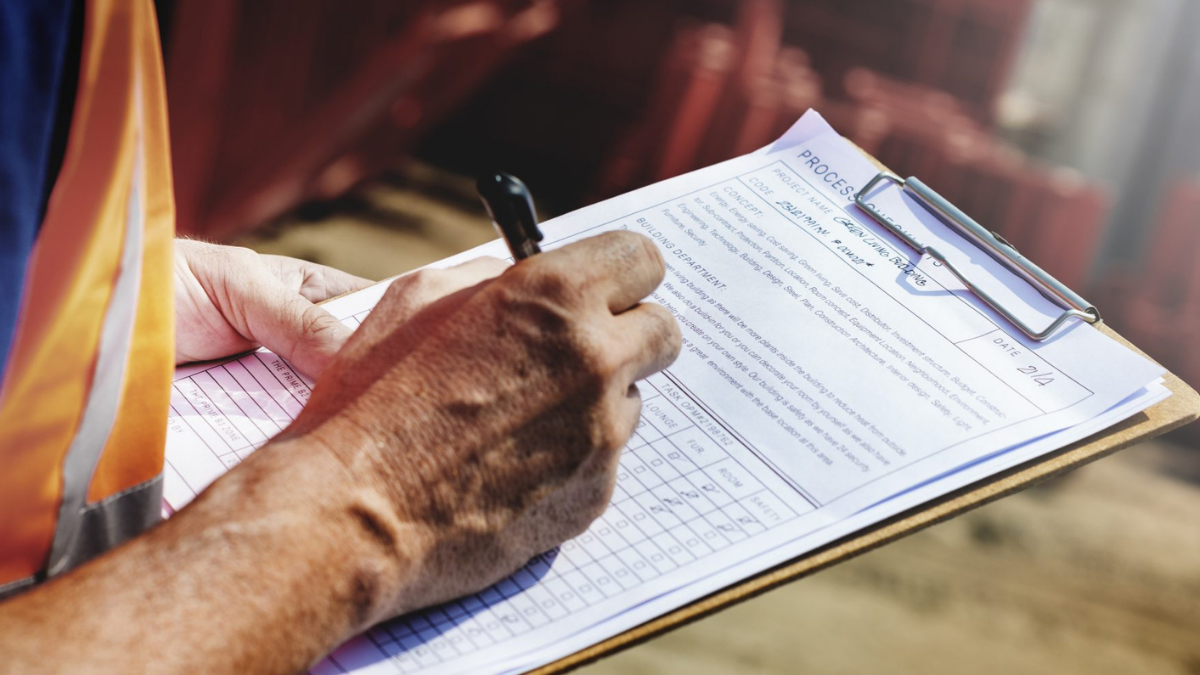
Working in hot conditions
Working in hot conditions, whether that is indoors or outdoors, can lead to an increase in accidents, injuries and risks to health and safety. Working in hot conditions may be seen as a seasonal change that workers should ‘adapt’ towards – but employers have a legal duty of care to protect employees from the dangers that working in hot conditions could bring.
 Who is at risk of working in hot conditions?
Who is at risk of working in hot conditions?
Working in hot conditions and being exposed to sunlight can be dangerous for people across a range of industry sectors and roles. In particular, people with freckled skin, light coloured eyes, fair hair, and those who are more susceptible to sunburn and moles, are at greater risk of dangers from heat and the sun. Similarly, employees with underlying health conditions are also at a greater risk.
Employees across a range of industry sectors are also at risk. This can include workers in:
- Glass and rubber manufacturing plants
- Mines
- Compressed air tunnels
- Conventional and nuclear power plants
- Boiler rooms
- Bakeries and catering kitchens
- Brick firing and ceramic plants
- Laundries
- Outdoor workers, including agricultural and construction workers, gardeners and some public service workers.
What are the risks of working in hot conditions?
Working in hot conditions, including high temperature rooms and working outdoors in the sun can present a range of risks. This could include:
- Dangers from working in the sun – Employees could be at risk of hurting themselves whilst working in the sun. This can include skin damage including sunburn, blistering, skin ageing and higher risk of getting skin cancer. Hot surfaces are also a key risk consideration.
- Heat stress – Working in hot environments for an extended period of time can cause heat exhaustion, heat stroke and heat stress. These conditions can evolve when an employee is unable to release their sweat due to restricted clothing, when an employee is dehydrated or generally when they are exposed to hot temperatures too much.
- Loss of concentration and ability to complete tasks – Hot conditions can sometimes cause employees to lose focus and energy through dehydration, stress and increased irritability. When this happens, and employees continue to work, there is an increased risk of accidents happening where employees and members of the public could be injured.
How to stay safe whilst working in hot conditions
To help reduce the health and safety risks created by working in hot conditions, employers should consider:
- Rescheduling work to cooler times of the day
- Providing more frequent rest breaks and introducing shaded areas
- Supply free access to drinking water and cold drinks
- Ensure that clothing supplied is loose fitting and protective. Consider hats and neck protection.
- Supply free access to high protection sunscreen (15 plus)
- Educate workers on the early symptoms of heat stress – this could include nausea or irritability, dizziness, feeling faint, headache, fatigue, thirst and heavy sweating.
- Control the temperature of indoor environments
Working in stormy conditions
Stormy weather is very common in the UK. With gail force winds, heavy rain and exposure to thunder and lightning, workers across a range of industries can be faced with a multitude of risks, including falling objects, risky equipment, flash floods and electrical risks from downed power lines and lightning strikes.
 Who is at risk when working in stormy conditions?
Who is at risk when working in stormy conditions?
Stormy weather can impact anyone. People travelling back and forth from work, people working outdoors and people working to repair damage caused by storms are all at risk. Particular job roles could include:
- Construction workers
- Utility workers
- Electrical engineers
- Plumbers and pipefitters
- Telecommunications field repair
- Farm and agriculture workers
- Roofers and building maintenance workers
- People who work at height
What are the risks of working in stormy conditions?
- Falling and flying objects, including trees, utility poles, walls and an array of objects found outdoors (watch out for trampolines and wheelie bins!)
- Working with risky equipment or infrastructure, such as scaffolding, ladders, cranes and unsecure roofs or structures.
- Downed power lines or electricity sources – these can be deadly or can cause significant harm as they energise the ground up to 35 feet away.
- Lightning risks – According to the Royal Society for the Prevention of Accidents, between 30 and 60 people are struck by lightning each year in Britain. Lightning can also cause local fires that can also put employees and the public at risk.
- Floods – Around 5 million people live and work in immediate flood risk areas in England and Wales. Flooding, including flash floods, can cause death through drowning.
How to stay safe whilst working in stormy conditions
- Avoid all work at height – Do not consider going on any roof or near exposed edges. Winds in excess of 23mph (Force 5) will affect a person’s balance, increasing the likelihood of falls.
- Avoid working in areas where there is a risk of falling objects or collapse of temporary or partially built structures.
- Remove or secure loose materials which may become a hazard when faced with stormy weather.
- Ensure that scaffolding is secured and adequately tied through additional ties or supports.
- Avoid working with cranes – cranes should be placed in a safe out of service condition in high winds. Once the storm is over, cranes should be inspected for damage, strength and stability before being brought back into service.
- Avoid working or being near large equipment such as bulldozers, track loaders and tractors.
- Adequately review and assess structures, scaffolding and other at risk equipment after the storm. These structures must be inspected for strength and stability by a competent person before being used again.
- Access to fragile roofs (such as corrugated iron, asbestos, PCV skylights etc.) after a storm should only be undertaken with appropriate equipment to prevent falls through the roof.
- If electrical power lines or electricity sources appear to be damaged or blown down, or if there are any exposed electrical components, individuals should stay clear and contact the appropriate emergency services or provider.
- If electrical power lines or sources are down and you are in your vehicle, stay inside the vehicle and warn others to stay away.
- Do not touch materials or surfaces that can conduct electricity, including metal scaffolding, utility lines, water, water pipes and plumbing.
- If an area you are in becomes flooded, immediately go to higher ground.
- If you have to evacuate or travel during a flood, don’t walk through flowing water, don’t drive through flooded areas and do not drive around road barriers.
Working at height – things to know
Falls from height are one of the biggest causes of workplace fatalities and major injuries, especially during severe weather. Read our blog all about staying safe whilst working at height.
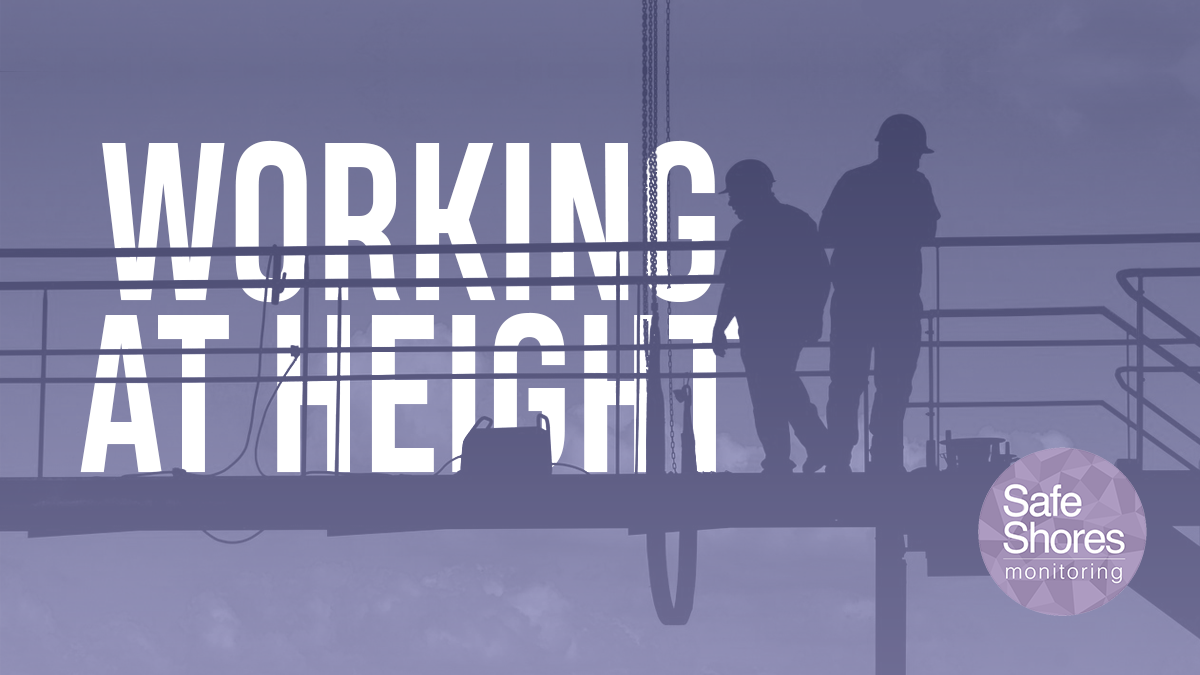
Technology for employees working in severe weather
Employers have a duty of care to manage risks that put their employees at risk. By adopting the appropriate technology, employees can feel reassured of their safety with the help they need only a button press away.
 At Safe Shores Monitoring, we offer a range of employee safety and lone worker devices and services, suited to a range of industries and job roles. Through the adoption of this technology, your employees can benefit from a range of risk controls, including:
At Safe Shores Monitoring, we offer a range of employee safety and lone worker devices and services, suited to a range of industries and job roles. Through the adoption of this technology, your employees can benefit from a range of risk controls, including:
Clock – The ability for an employee to ‘clock on’ at the start of their working day, and ‘clock off’ at the end, with welfare checks if an employee fails to clock off as this may indicate an employee is in danger.
TAG – The Timed Activity Guard gives an employee the ability to set a timer when performing a hazardous activity. This means if they fail to ‘TAG OFF’ at the end of the task, they will receive a welfare check to ensure their safety.
Worker Down Sensor – Some of our devices are fitted with a configurable worker down sensor that raises an automatic alarm when an employee has had a fall or is inactive and unresponsive with their movement.
Friend In Need – When an employee feels threatened or unsafe when working or travelling to and from work, they can use our Friend In Need service to chat with our Alarm Receiving Centre to feel reassured and safe.
SOS – When an employee is in danger, they can use their SOS button to raise an alarm to our 24 hour Alarm Receiving Centre. This will ensure the employee receives the help they need, including priority police assistance.
To find out more about our range of technology and service features, download our service overview brochure below.
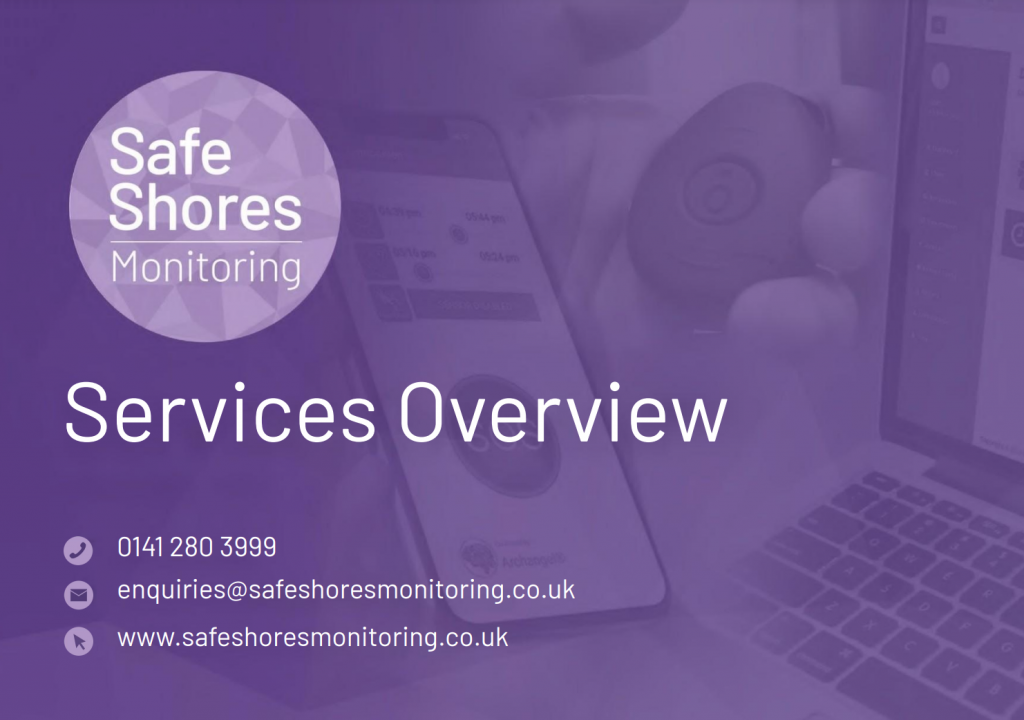
Disclaimer: the information provided in this article is for general guidance only and is not legal advice. This article is not a substitute for Health and Safety consultancy. For legal advice, you should seek independent advice.
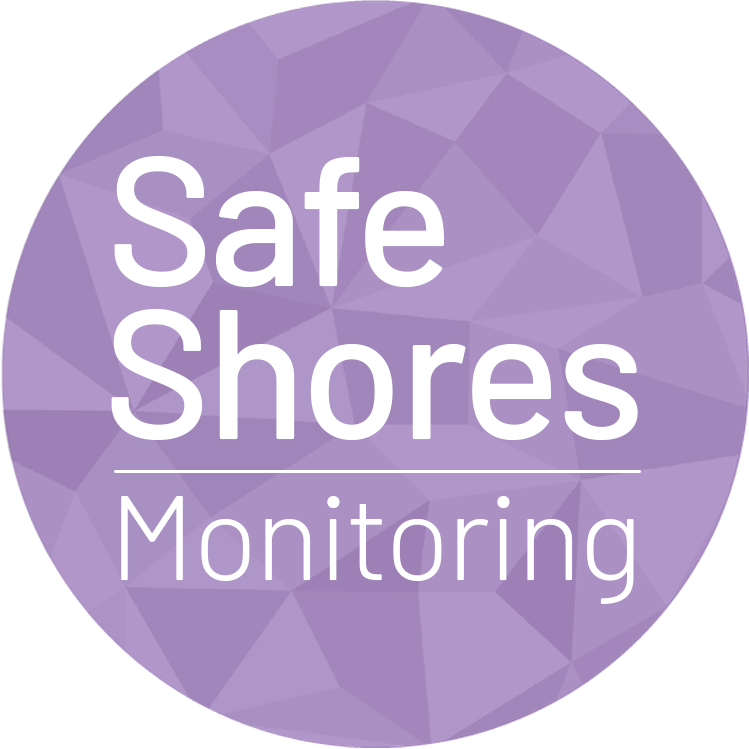
To find out more about Safe Shores Monitoring and out mission to Protect, Assure and Respond to all lone workers and their requirements, please click here.
